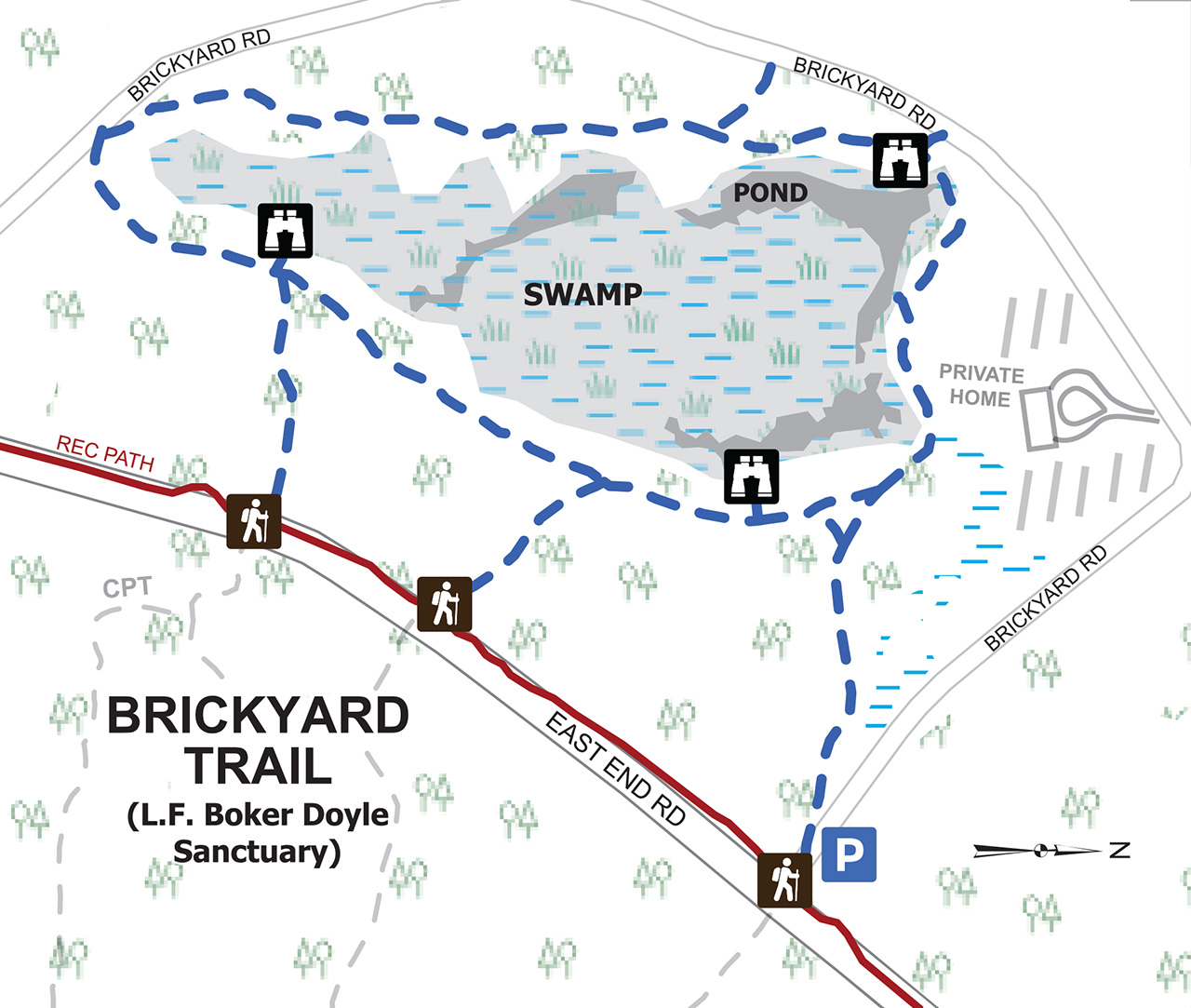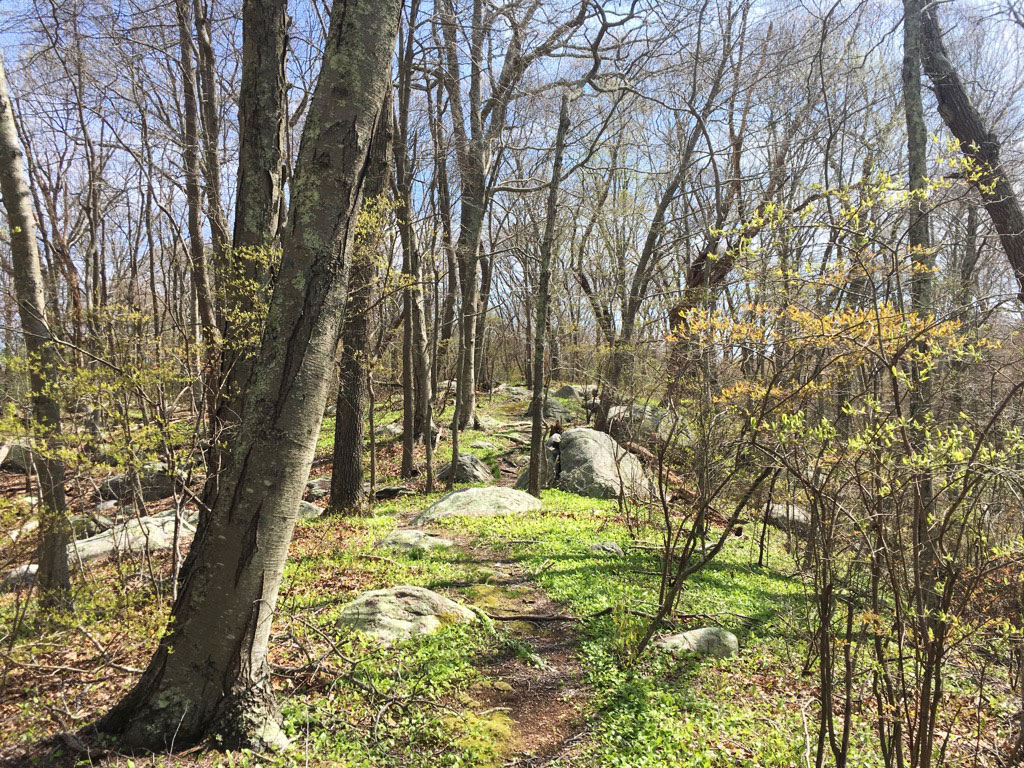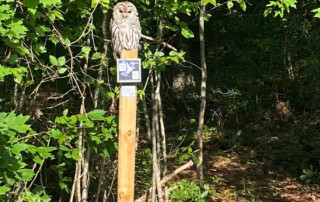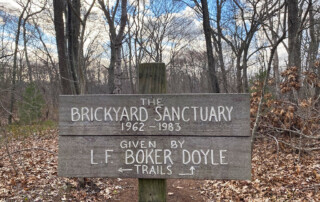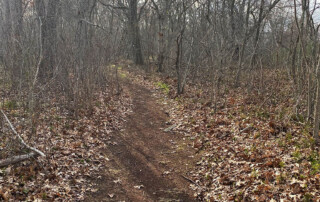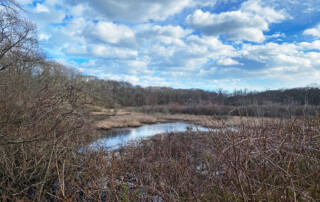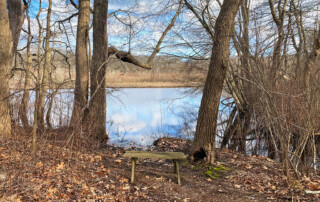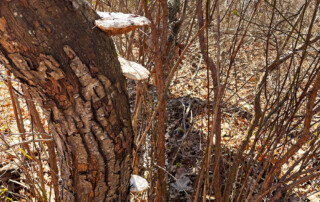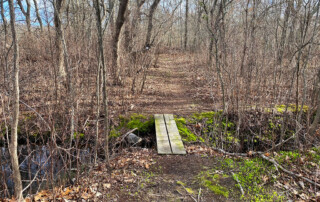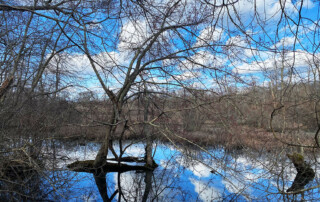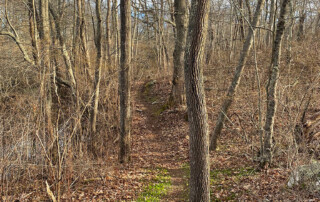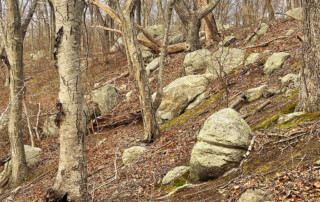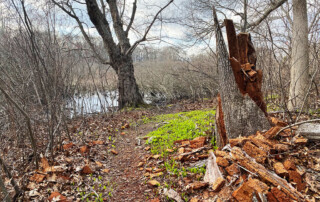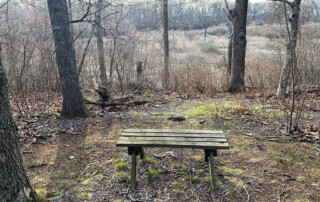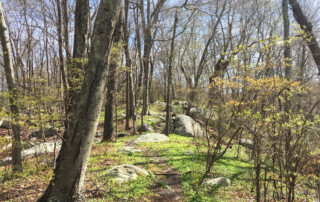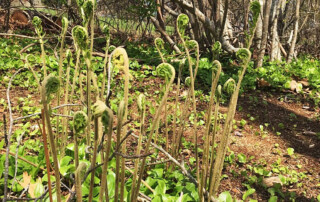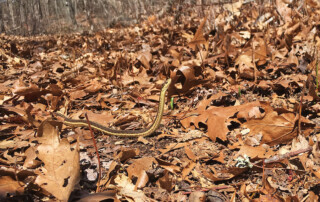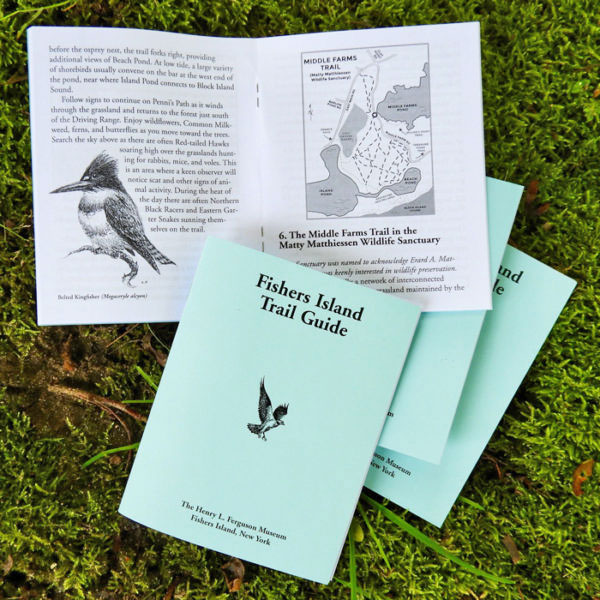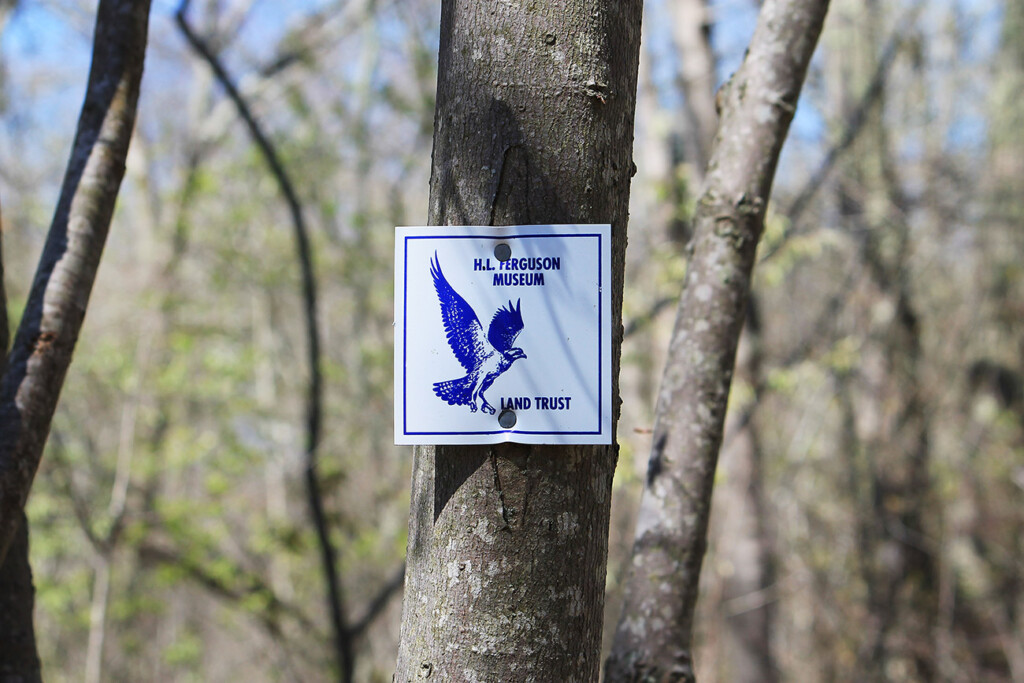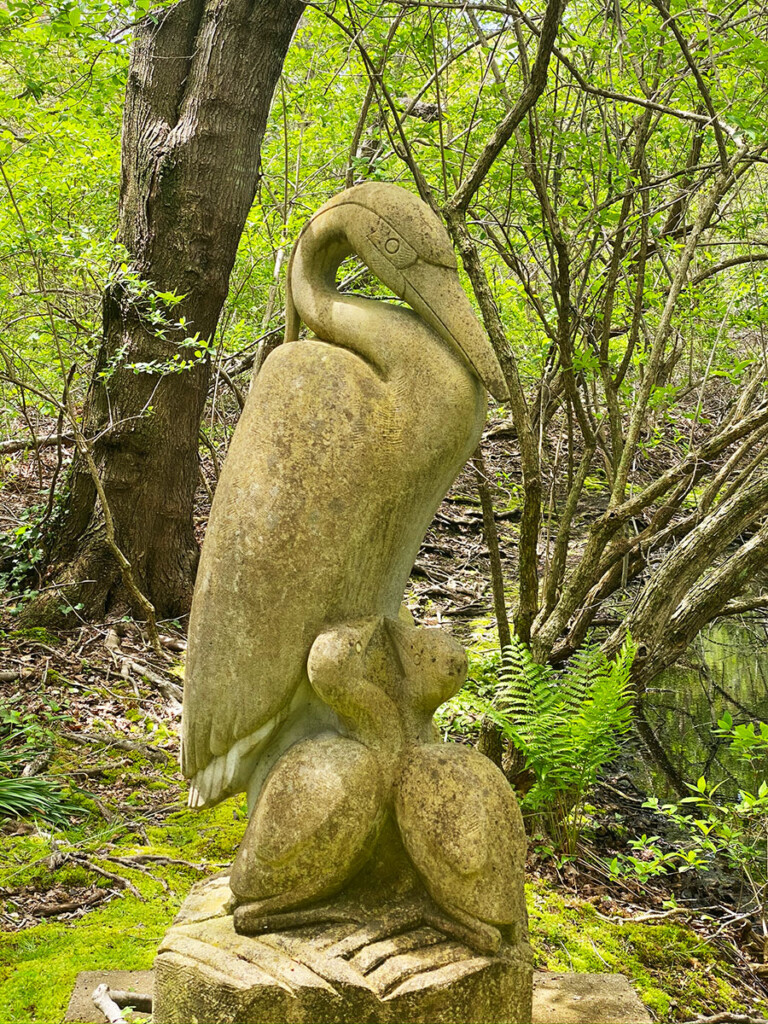2. The Brickyard Pond Trail in the L. F. Boker Doyle Sanctuary
This 15.5-acre tract of land, sometimes referred to as the Brickyard Sanctuary, was given to the Henry L. Ferguson Museum Land Trust by L.F. Boker Doyle in 1982 and 1983. The trail offers easy walking, good birding and diverse plant life. The initial path through a woodland area intersects the Brickyard Pond Trail, a loop of one mile that encircles the swamp.
Driving east up the Island, enter this Sanctuary on the north (left) side of the main road where it intersects with a dirt road just before the entrance to Grey Gulls. There is convenient parking along the dirt road near the trailhead. (Across the main road is the main entrance to the Clay Pit trail.)
The beginning of the Brickyard Pond Trail is clearly marked and leads through woods of Black Oak and Red Maple to the Brickyard Pond and marsh. At early and late times of the day, you might hear the distinctive, rhythmic hooting of “hoo hoodoo hoooo hoo” from a resident Great Horned Owl. A variety of mushrooms, Indian Pipes, and Clubmoss often line the trail. There’s a good chance you will hear and see Great Crested Flycatchers, as well as Downy, Hairy and Red-bellied woodpeckers—or perhaps encounter an Eastern Garter Snake or Northern Black Racer. After about a tenth of a mile, the trail forks at the northeastern end of the pond. A recommended route is to bear left along the shore of the pond that runs parallel and closest to the main road. The trail loops around the pond and marshlands, passing through some of the most scenic and diverse habitats on our Island.
As you begin your walk, the woodland is characterized by Red, Black and White oaks at higher elevations and Red Maples closer to the water. Hickory, American Beech, and Black Gum are present in small numbers throughout. Understory shrubs include Shadbush, Pink Azalea, High bush Blueberry, Winterberry, Black Huckleberry, and its less-common cousin, Dangleberry. These species provide delicious edible fruits for wildlife in mid to late summer. This Sanctuary is a particularly good area for spotting and hearing warblers and songbirds during spring and fall migrations. Note that toward the center of the marsh is a long-abandoned telephone pole supporting a Wood Duck nesting box. Farther along the trail is a large field of lichen-covered glacial erratics. The trail then turns and drops to the pond edge, passing through a section dominated by lush, vibrant ferns.
As the trail continues along the side of the pond, it changes elevation frequently, revealing vernal pools inhabited by Green Frogs. These seasonal pools are the destination for the Spotted Salamanders who migrate across the surrounding roads in spring to breed. The trail follows the edge of the marshland and some sections of open water, allowing intimate access for viewing pond life and plants. Note the distinctive Water-willow, which creates a floating thicket with arching branches that take root where they touch water. The marsh and pond contain many fallen logs and dead trees that provide excellent habitat for a variety of wildlife: salamanders, frogs, turtles, snakes, and waterfowl, as well as species of songbirds and raptors. Around the pond, look for Great Blue and Little Blue herons and Great Egrets, as well as Red-winged Blackbirds and colorful dragonflies. On very rare occasions, you might spot a River Otter or Mink in the water or crossing the trail. A quiet approach will often reveal an Eastern Painted Turtle sunning on a rock or a partially submerged log.
As the path continues, look for a variety of ducks and wading birds in the open water of the pond. The trail crosses a small intermittent stream, one of two outlets that flow from the pond into West Harbor after heavy rainfall. Look for River Otter scat on outcroppings along the pond’s edges. A small grouping of rocks and the presence of mowed lawn mark the section of trail that passes through private property. Please stay close to the water’s edge until you rejoin the wooded trail. This forest path soon intersects the short tenth of a mile spur that takes you back to the trail entrance and parking area.
